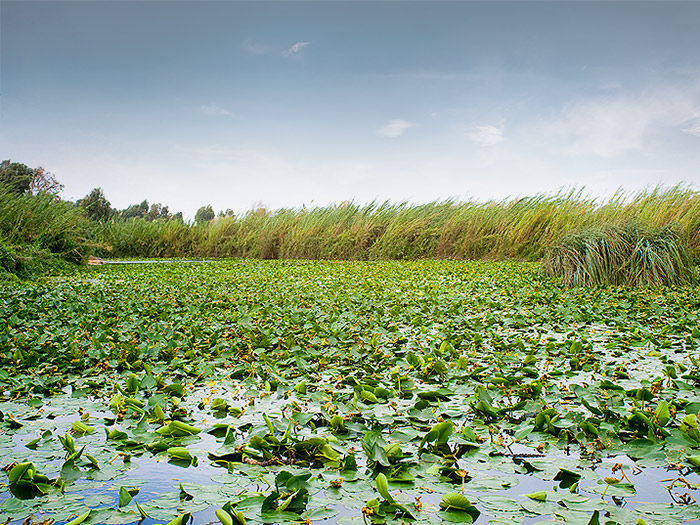Supreme Court: Clean Water Act Jurisdictional Determinations Are Appealable Agency Actions
- David Bell

- Jun 3, 2016
- 3 min read

This week, the U.S. Supreme Court ruled in the Hawkes case[1] that a jurisdictional determination (“JD”) by the Army Corps of Engineers is a final agency action that is subject to judicial review. With this ruling, it is clear that businesses and landowners have the opportunity to appeal a JD (following an administrative review process) rather than having to wait until the completion of the permitting process to challenge whether or not a permit was needed in the first place. This potentially allows some landowners to obtain relief from overreaching interpretations of “waters of the United States,” and as more cases are reviewed, may provide some clarity as to what areas are (or are not) subject to CWA jurisdiction.
Background:
Under the Clean Water Act (“CWA”), a permit is needed before discharging any pollutant into “navigable waters”, which is defined as “the waters of the United States”. As we have noted before, what actually constitutes “waters of the United States” is “notoriously unclear”, even to Supreme Court justices.[2]
Generally, the definitions of “any pollutant” and “waters of the United States” have been interpreted to provide the CWA with an exceedingly broad reach. Under the CWA, “pollutants” include clean soil and fill materials, including those used by individual landowners to build homes and develop their property, and “waters of the United States” can include land that is only occasionally saturated with water, if it bears a significant nexus to other “waters of the United States.”[3] The reach of the CWA may be best summarized by the relationship of land to a “navigable water” that was in dispute in the Hawkes case; the Corps determined that the property contained “waters of the United States” because its wetlands had a significant nexus to a river located 120 miles away.[4]
Making matters worse, despite the difficulty in determining whether a piece of property contains “waters of the United States”, there are significant consequences if jurisdiction is triggered. Discharging pollutants (including dredge and fill materials) without a permit can lead to civil or even criminal enforcement actions. On the other hand, permits for even the most minimal impacts cost approximately $30,000 and take nearly a year to complete. For more complex “individual” permits, the average applicant “spends 788 days and $271,596 in completing the process, without counting costs of mitigation or design changes” which could materially drive costs up.[5]
To help provide clarity to the permitting process, landowners may re
quest that the Corps provide a jurisdictional determination on their property to assess whether CWA jurisdiction applies. In the Hawkes case, the plaintiffs disagreed with the Corps decision that the CWA applied, and after participating in the administrative review process, sought to have a court review the Corps’ decision. However, the Corps claimed that Hawkes were not entitled to have judicial review of their JD, and would have to wait until the conclusion of the permitting process to go to court. Eventually, the Supreme Court agreed with the Hawkes plaintiffs, noting in part that immediate judicial review was warranted, considering the costs that would be incurred in seeking a final permit.
This case represents a modest victory for landowners, since it provides them with the ability to dispute jurisdictional determinations more expediently, and before incurring significant permitting costs. Furthermore, if the Corps continues to issue JDs, and more rulings are published from reviewing courts, the facts from those cases may help to provide some clarity regarding what constitutes “waters of the United States.”
For more information, please contact:
216.513.1041
John Obery, Esq.
216.401.2649
Legal Disclaimer:
This blog post may be reproduced, in whole or in part, with the prior permission of Dave Bell Law and acknowledgement of its source. This publication is intended to inform clients about legal matters of current interest. It is not intended as legal advice. Readers should not act upon the information contained in it without professional counsel.
This document may be considered attorney advertising in some jurisdictions.
[1] United States Army Corps of Eng’rs v. Hawkes Co., 2016 U.S. LEXIS 3489 (May 31, 2016).
[2] See, Hawkes, 2016 U.S. LEXIS 3489, (J. Kennedy, concurring); see also, Sackett v. EPA, 564 U.S. 1052 (2011)
[3] 33 U.S.C. §328.3(a)(3) (2012). Note that the Corps adopted a new rule in 2015 modifying the definition of “waters of the United States”, which is currently stayed pending litigation. If it remains in effect, the new definition could expand the CWA’s reach even further.
[4] Hawkes, para. 2 of Syllabus.
[5] Hawkes, pg. 6, citing Rapanos v. United States, 547 U.S. 715, 721 (2006).







































Comments